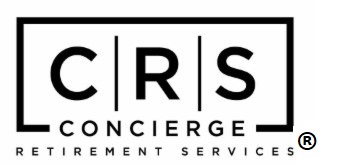Concierge Retirement Services
Frequently Asked Questions
Concierge Retirement Services is a premier benefits consulting firm that specializes in helping small to mid-sized companies implement and run successful retirement plans that are customized to meet their specific goals.
Below are some of the Frequently Asked Question (FAQs) we receive:
What are the benefits of a 'tax qualified retirement plan?
- Contributions made by the sponsoring employer to the plan are tax deductible
- Investment earnings within the trust are tax deferred
- Contributions plus any investment earnings become taxable to a participant only when the participant receives a distribution from the plan; a participant can continue to defer any taxes by electing a direct rollover to an IRA or another qualified retirement plan.
Can any type of employer entity establish a qualified retirement plan?
A qualified retirement plan can be adopted by a corporation (C or S), a partnership, an LLC or LLP, or a sole proprietor.
What reportable compensation is used to determine retirement benefits and contributions?
- For corporations, it is the employees’ W-2 compensation. S-Corp. distributions are not includable.
- For partners in a partnership, it is their K-1 earned income. Unearned income (such as interest, dividends, royalties, etc.) are not includable.
- For a sole proprietor, it is their Schedule C income.
Are there maximum compensation and contribution limits?
Maximum compensations and contributions apply to a variety of plans. See Caps and Maximum Contribution for more information.
What is the deadline for making a tax deductible contribution to a qualified retirement plan?
Employer tax deductible contributions must be made by the due date (including any extensions) of the employer’s tax return. Qualified retirement plans which are subject to minimum funding standards (i.e. defined benefit, cash balance and money purchase plans) must make the required plan contribution no later than 8 ½ months after the plan year end to avoid a funding deficiency and the imposition of excise taxes.
Must a qualified retirement plan have a written plan document, and if so, by what date must it be adopted?
A written plan document is required, and it must be adopted no later than the last day of the employer tax filing due date for which a plan contribution will be claimed as a tax deduction.
What are the different types of qualified retirement plans?
Qualified retirement plans are classified as either Defined Contribution (DC) or Defined Benefit (DB). View our plan types to learn more about each of these structures and which might best suit your needs.
Please don’t hesitate to reach out to us if you have additional questions or need clarification.
What is the maximum annual amount that can be allocated to a participant in a DC plan?
The maximum annual amount is the lesser of 100% of compensation or the limit specified for the current year, subject to tax deductible contribution limitations.
For further explanation, see our Caps and Maximum Contribution section or don’t hesitate to reach out to us in you have additional questions or need clarification.
What is the maximum annual 401(k) deferral?
The annual deferral limits are set by the IRS and tend to increase year by year.
For further explanation, see our Caps and Maximum Contribution section or don’t hesitate to reach out to us in you have additional questions or need clarification.
When must 401(k) salary deferrals be remitted to a plan?
For plans with fewer than 100 participants, the Department of Labor (DOL) provides a “safe-harbor” timeframe. The deferrals must be remitted within 7 business days from the time that it was withheld from the employee’s salary.
For plans over 100 participants there is no such safe harbor. Accordingly, the employer must remit the deferrals as soon as administratively practical.
Can a participant borrow money from a qualified retirement plan?
Yes, provided the plan document contains a participant loan provision. The maximum amount that a participant may borrow from a plan is generally 50% of their vested account balance, but not more than $50,000.
Loans must be charged a competitive interest rate (usually Prime Rate plus 1%). Loans must be repaid over a period, not to exceed five years, unless the loan is being used to purchase a primary residence. In that case, loans may be repaid over a longer period of time.
How are distributions from a qualified retirement plan taxed to a participant?
Distributions from a qualified retirement plan that are not taken as a direct rollover to an IRA or another qualified retirement plan are subject to 20% federal tax withholding. Hence, the participant will only receive 80% of the total benefit. Distributions taken as a direct rollover would not be subject to the 20% federal tax withholding, and would not be subject to taxation until subsequently withdrawn from an IRA or qualified retirement plan.
Distributions taken before age 59 ½ are subject to an additional 10% excise tax, unless:
- On account of death or disability of the participant,
- The distribution is part of a series of substantially equal periodic payments (not less frequently than annually) made over the life (or life expectancy) of the participant or the joint lives (or joint life expectancies) of the participant and designated beneficiary, or
- On account of separation of service after attainment of age 55.
When must distributions be taken from a qualified retirement plan?
Minimum required distributions must commence at a participant’s required beginning date, defined to be the following:
- 5% owner – the April 1 following the calendar year in which the 5% owner attains age 72; minimum required distributions must continue each calendar year thereafter, including the same year (if applicable) in which the first minimum required distribution was taken.
- Non-5% owner – the April 1st following the later of the calendar year in which the non-5% owner attains age 72 and retires from the employer sponsoring the plan; minimum required distributions must continue each calendar year thereafter, including the same year (if applicable) in which the first minimum required distribution was taken.
- Minimum required distributions are determined in accordance with IRS regulations and tables, computed by dividing the participant’s account balance by the life expectancies of the participant and the designated beneficiary.
- There is a 50% excise tax on any portion of a minimum required distribution that is not taken.
Are qualified retirement plans subject to any annual government filing requirements?
Each year, reporting and disclosure series Form 5500 (with supporting schedules) must be filed with the government. The due date (without extension) for filing the Form 5500 is the last day of the seventh month following the end of the plan year. The due date can be extended for an additional 2 ½ months by filing an extension (Form 5558).
Invested in People
We built our business first by truly CARING. And second by ACTIVE LISTENING and fully understanding our clients.
Our team members have personally designed and implemented many employee benefit plans, allowing each of us to bring first-hand experience to the table.
We are patient with our clients, referral sources, and each other. We treat each other with respect and dignity. We respect all employees and co-workers and value their contributions to you and to the company.
Let’s Build Something Together
Would you like to have a conversation? Would you like to discover more?
Here’s a few ways to get in touch with us.
Info@ConciergeRetirementServices.com
7 Rye Ridge Plaza #404
Rye Brook, NY 10573
+1 (914) 251-0099
Follow Us


